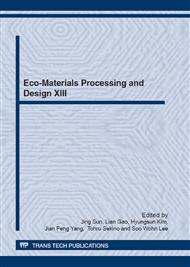p.159
p.163
p.169
p.173
p.178
p.182
p.186
p.190
p.197
Hot Workability of a High Strength Low Alloy Steel for Construction Application
Abstract:
The hot deformation behavior of a high strength low alloy (HSLA) steel for construction application under hot working conditions in the temperature range of 900 to 1100 and strain rate range from 0.1 to 10 s-1 has been studied by performing a series of hot compression tests. The dynamic materials model has been employed for developing the processing maps, which show variation of the efficiency of power dissipation with temperature and strain rate. Also the Kumars model has been used for developing the instability map, which shows variation of the instability for plastic deformation with temperature and strain rate. The efficiency of power dissipation increased with decreasing strain rate and increasing temperature. High efficiency of power dissipation over 20 % was obtained at a finite strain level of 0.3 under the conditions of strain rate lower than 1 s-1 and temperature higher than 1050. Plastic instability was expected in the regime of temperatures lower than 1000°C and strain rate lower than 0.3 s-1.
Info:
Periodical:
Pages:
178-181
Citation:
Online since:
June 2012
Authors:
Price:
Сopyright:
© 2012 Trans Tech Publications Ltd. All Rights Reserved
Share:
Citation:


